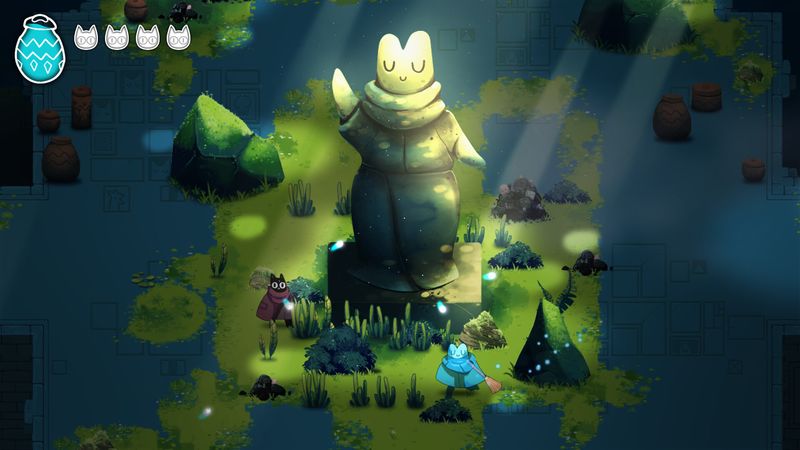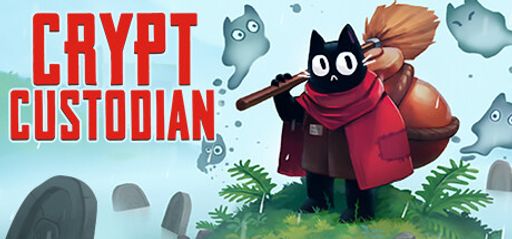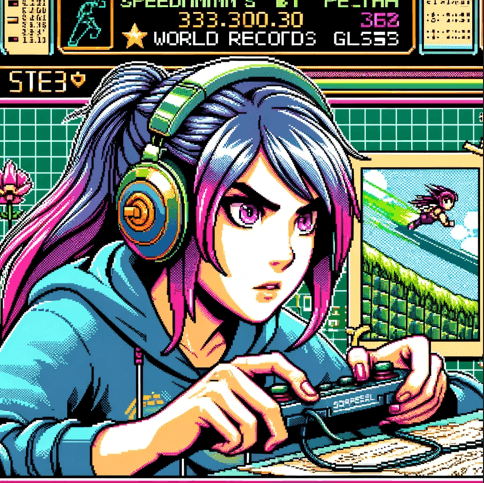 Let’s kick off with Crypt Custodian, made and published by Kyle Thompson. I read he built it solo on Unity over two years, which is pretty impressive for a one-person project. From the moment you boot it up, players rave about its instant restarts and teleport-anywhere feature—two standout quality-of-life additions that enhance the experience. One review even called it “bellissima.” For speedrunners like me, these QOL moves seriously cut both load time and downtime. The top-down Zelda vibe paired with a metroidvania map feels like a sweet remix of genre classics.
Let’s kick off with Crypt Custodian, made and published by Kyle Thompson. I read he built it solo on Unity over two years, which is pretty impressive for a one-person project. From the moment you boot it up, players rave about its instant restarts and teleport-anywhere feature—two standout quality-of-life additions that enhance the experience. One review even called it “bellissima.” For speedrunners like me, these QOL moves seriously cut both load time and downtime. The top-down Zelda vibe paired with a metroidvania map feels like a sweet remix of genre classics.
 Building on that, I agree completely. What really stands out is how the overall design connects with long-time genre fans. Combat flows quickly but still demands solid timing. I love how your broom swing chains seamlessly into dash attacks—it’s satisfyingly fluid. It feels precise, like the calculated pacing of Souls-likes mashed with a fresh indie flair. The hitboxes stay tight, with no weird pixel drift or delay. That kind of responsive control reflects Kyle Thompson’s clear development vision, as shared in his dev diaries.
Building on that, I agree completely. What really stands out is how the overall design connects with long-time genre fans. Combat flows quickly but still demands solid timing. I love how your broom swing chains seamlessly into dash attacks—it’s satisfyingly fluid. It feels precise, like the calculated pacing of Souls-likes mashed with a fresh indie flair. The hitboxes stay tight, with no weird pixel drift or delay. That kind of responsive control reflects Kyle Thompson’s clear development vision, as shared in his dev diaries.

 Zooming out to the world design, from my open-world lens, the map structure truly shines. You gradually unlock new broom skills that allow access to sealed groves, creating a loop of exploration and return. It strongly echoes Metroid II’s backtracking, but with a friendly cat twist that softens the challenge into something more inviting. The world loops back smoothly, which I always appreciate in a map-driven game. The Sinner’s Inn hub also ties in quests and NPCs in a cohesive way. I read Thompson said he aimed to blend the exploration of metroidvanias with the charm of top-down Zelda—and it definitely comes through.
Zooming out to the world design, from my open-world lens, the map structure truly shines. You gradually unlock new broom skills that allow access to sealed groves, creating a loop of exploration and return. It strongly echoes Metroid II’s backtracking, but with a friendly cat twist that softens the challenge into something more inviting. The world loops back smoothly, which I always appreciate in a map-driven game. The Sinner’s Inn hub also ties in quests and NPCs in a cohesive way. I read Thompson said he aimed to blend the exploration of metroidvanias with the charm of top-down Zelda—and it definitely comes through.
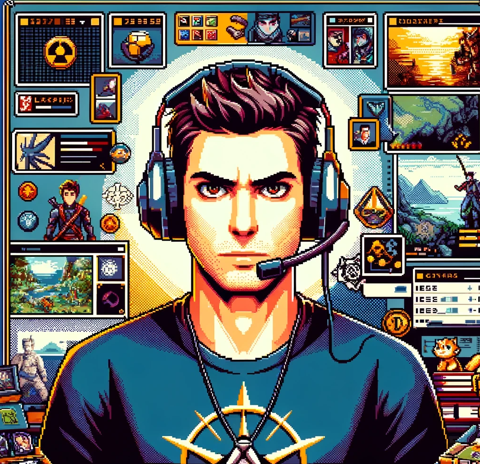 Exploration is rewarded in a big way. I dove into every corner looking for collectibles, and there are over forty hidden ghost memos to find. Each one reveals a bite-sized backstory, offering lore and personality that deepen the world without overwhelming it. I ended with 95 percent map completion, thanks in part to the convenient instant transport pods. Even the smallest ruins hide lore flags and subtle worldbuilding touches, which kept me engaged. The pacing never drags, though I did run into a few obscure platforming puzzles along the way. A soft hint system could really help curb some of the trial-and-error in those trickier spots.
Exploration is rewarded in a big way. I dove into every corner looking for collectibles, and there are over forty hidden ghost memos to find. Each one reveals a bite-sized backstory, offering lore and personality that deepen the world without overwhelming it. I ended with 95 percent map completion, thanks in part to the convenient instant transport pods. Even the smallest ruins hide lore flags and subtle worldbuilding touches, which kept me engaged. The pacing never drags, though I did run into a few obscure platforming puzzles along the way. A soft hint system could really help curb some of the trial-and-error in those trickier spots.
 When it comes to mechanics, there’s a lot to love. The teleport gems are an MVP feature. They let you warp between checkpoints and skip empty halls, which massively boosts both speedruns and casual exploration. The broom’s double-jump has just the right float time—not too sluggish, not too twitchy. That fine-tuned responsiveness makes it easier to nail tricky platforming sequences, even under pressure during speed attempts.
When it comes to mechanics, there’s a lot to love. The teleport gems are an MVP feature. They let you warp between checkpoints and skip empty halls, which massively boosts both speedruns and casual exploration. The broom’s double-jump has just the right float time—not too sluggish, not too twitchy. That fine-tuned responsiveness makes it easier to nail tricky platforming sequences, even under pressure during speed attempts.
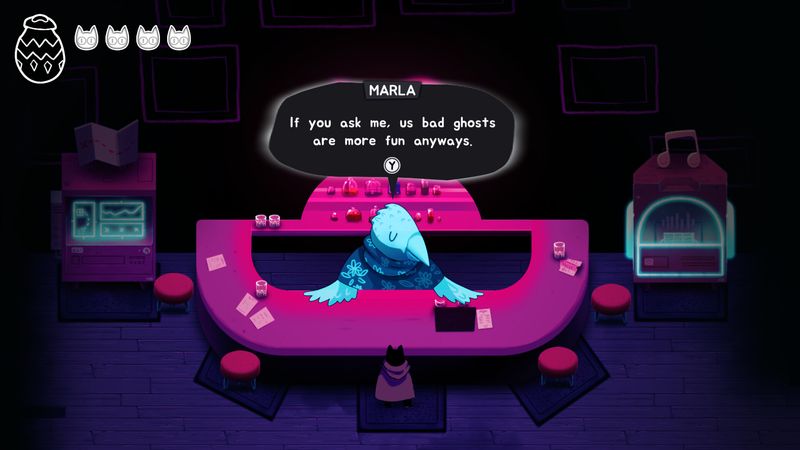
 Let’s talk upgrades. The tree is sharp. You craft brooms and gear at tables in Sinner’s Inn. Mixing broom stats with ghost gear reminded me of Diablo’s build-craft. But here it stays simple enough to be approachable. You can swap abilities on the fly, which makes testing combos quick and fun. That’s a great balance between hardcore style and casual friendliness.
Let’s talk upgrades. The tree is sharp. You craft brooms and gear at tables in Sinner’s Inn. Mixing broom stats with ghost gear reminded me of Diablo’s build-craft. But here it stays simple enough to be approachable. You can swap abilities on the fly, which makes testing combos quick and fun. That’s a great balance between hardcore style and casual friendliness.
 Narrative-wise, the story hooks you right away with Pluto’s banishment. Early dialogue with Kendra, the Afterlife Guardian, packs a funny sting. Also, side ghosts in the Inn each carry a mini-arc, and you learn how they died through subtle chat hints. That kind of pacing feels like a serialized comic. It keeps you moving from room to room without fatigue.
Narrative-wise, the story hooks you right away with Pluto’s banishment. Early dialogue with Kendra, the Afterlife Guardian, packs a funny sting. Also, side ghosts in the Inn each carry a mini-arc, and you learn how they died through subtle chat hints. That kind of pacing feels like a serialized comic. It keeps you moving from room to room without fatigue.
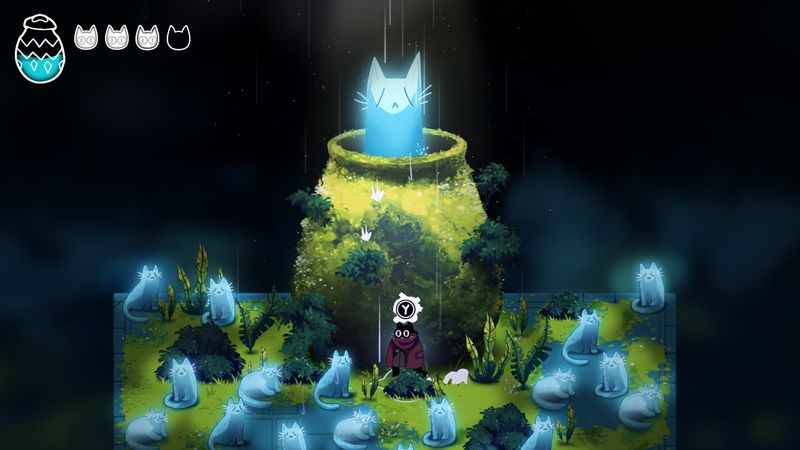
 Audio design also deserves a shoutout. The music swells when bosses spawn, giving tension a boost. Tracks like “Haunted Courtyard” use soft piano over strings for a moody vibe. That contrast keeps you alert. The broom swoosh and ghostly whisper effects are crisp—no crackle or lag, even on Steam Deck. Voice lines are brief but charming, perfectly nailing the spooky-cute tone.
Audio design also deserves a shoutout. The music swells when bosses spawn, giving tension a boost. Tracks like “Haunted Courtyard” use soft piano over strings for a moody vibe. That contrast keeps you alert. The broom swoosh and ghostly whisper effects are crisp—no crackle or lag, even on Steam Deck. Voice lines are brief but charming, perfectly nailing the spooky-cute tone.
 Characters stand out, too. Pluto’s sly meows pop in speech bubbles. Ghosts like Bertha the Bard are unique—she even sings clues about hidden doors. I appreciate the diversity. Pluto’s a cat spirit, but you’ll also meet a knight, a scholar, and a jester. That kind of range definitely boosts replay value.
Characters stand out, too. Pluto’s sly meows pop in speech bubbles. Ghosts like Bertha the Bard are unique—she even sings clues about hidden doors. I appreciate the diversity. Pluto’s a cat spirit, but you’ll also meet a knight, a scholar, and a jester. That kind of range definitely boosts replay value.
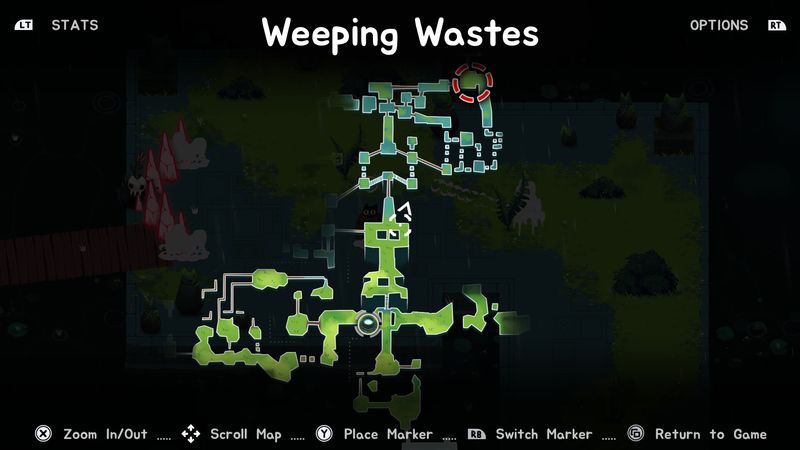
 When it comes to challenge, Crypt Custodian strikes a thoughtful balance between combat intensity and puzzle-solving. Early on, enemies can drop you fast if your dodge timing is off, keeping you on your toes from the get-go. As the game progresses, later dungeons introduce more complexity, requiring you to mix and match newly learned skills. This evolving difficulty curve keeps things fresh. I saw a user mention a spike at the Golem boss—and honestly, I felt that too. Fortunately, the game lets you tweak your build by equipping lighter gear or shifting your strategy. That kind of flexible difficulty invites players to approach obstacles in creative ways, instead of locking them into a rigid path.
When it comes to challenge, Crypt Custodian strikes a thoughtful balance between combat intensity and puzzle-solving. Early on, enemies can drop you fast if your dodge timing is off, keeping you on your toes from the get-go. As the game progresses, later dungeons introduce more complexity, requiring you to mix and match newly learned skills. This evolving difficulty curve keeps things fresh. I saw a user mention a spike at the Golem boss—and honestly, I felt that too. Fortunately, the game lets you tweak your build by equipping lighter gear or shifting your strategy. That kind of flexible difficulty invites players to approach obstacles in creative ways, instead of locking them into a rigid path.
 For those interested in speedrunning or just seeing how efficiently they can move through the game, I clocked some runs that skipped optional rooms. The main story wrapped up in about twenty-three minutes on a focused run. Teleport gems and instant restarts are clutch here—they’re the backbone of any tight split. Best of all, the game respects your time. A wipe never leads to a punishing reload screen. You’re dropped back in fast, making even failed attempts feel like progress.
For those interested in speedrunning or just seeing how efficiently they can move through the game, I clocked some runs that skipped optional rooms. The main story wrapped up in about twenty-three minutes on a focused run. Teleport gems and instant restarts are clutch here—they’re the backbone of any tight split. Best of all, the game respects your time. A wipe never leads to a punishing reload screen. You’re dropped back in fast, making even failed attempts feel like progress.
 As for replay value, there’s a surprising amount tucked into this charming world. Beyond the main ending, players can hunt down secret endings by collecting puzzle keys scattered across the map. These lead to a hidden vault that unlocks a post-credits scene—definitely worth the effort. There are also gear-based achievements and detailed map markers that encourage completionists to scour every corner. If you love second playthroughs where you’re fully equipped and free to experiment, this game delivers.
As for replay value, there’s a surprising amount tucked into this charming world. Beyond the main ending, players can hunt down secret endings by collecting puzzle keys scattered across the map. These lead to a hidden vault that unlocks a post-credits scene—definitely worth the effort. There are also gear-based achievements and detailed map markers that encourage completionists to scour every corner. If you love second playthroughs where you’re fully equipped and free to experiment, this game delivers.
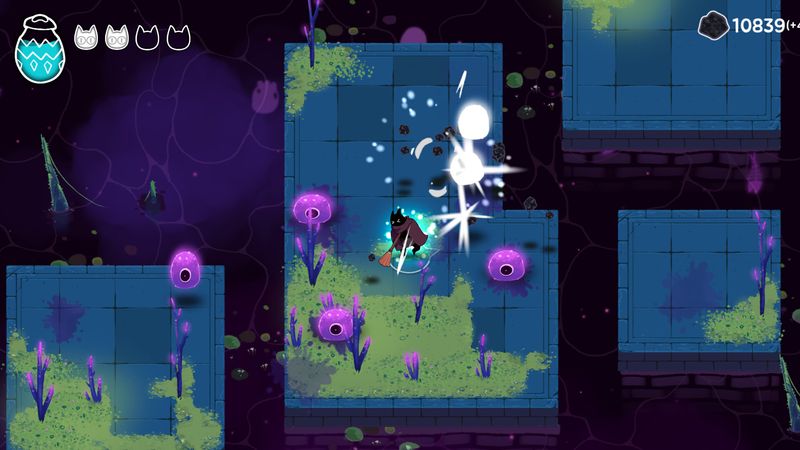
 In terms of comparisons, Crypt Custodian is shorter than titles like Hollow Knight or Link’s Awakening, but it offers a more welcoming vibe. It trades the punishing edge of larger metroidvanias for a cozier, more approachable sense of depth. That makes it perfect for players who enjoy the genre’s exploration and mechanics but don’t want to commit to a massive or grueling experience.
In terms of comparisons, Crypt Custodian is shorter than titles like Hollow Knight or Link’s Awakening, but it offers a more welcoming vibe. It trades the punishing edge of larger metroidvanias for a cozier, more approachable sense of depth. That makes it perfect for players who enjoy the genre’s exploration and mechanics but don’t want to commit to a massive or grueling experience.
 All things considered, this game stands out through its smart quality-of-life design, tight controls, and heartwarming afterlife world. Kyle Thompson has shown that a solo dev can create an indie gem that stands toe-to-toe with titles from big-name studios.
All things considered, this game stands out through its smart quality-of-life design, tight controls, and heartwarming afterlife world. Kyle Thompson has shown that a solo dev can create an indie gem that stands toe-to-toe with titles from big-name studios.
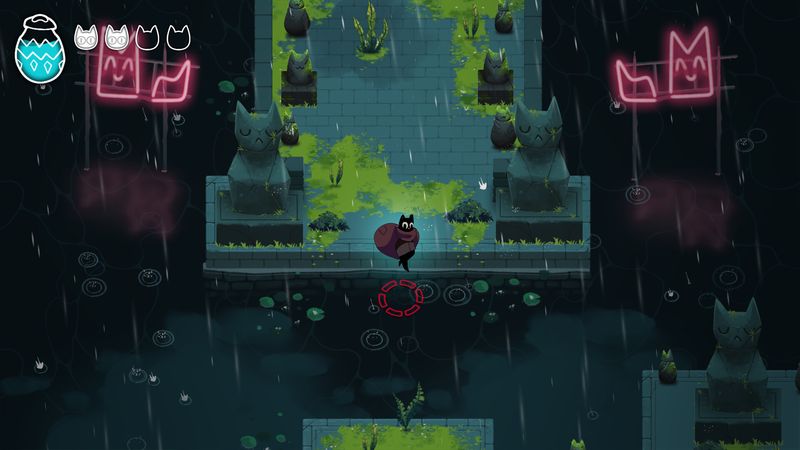
 Crypt Custodian stands out with its clear visual design, fast load times, and a heartwarming cast of characters. Combining the nostalgic top-down style of classic Zelda games with the deep exploration and backtracking of metroidvania adventures, it’s a must-play for genre fans. If you’re hooked, dive into similar titles that offer rich gameplay and emotional depth. Hollow Knight delivers expansive maps, precise combat, and hauntingly beautiful lore. Teslagrad introduces magnetic puzzles and hand-drawn visuals for a thoughtful metroidvania twist. CrossCode mixes lightning-fast combat and intricate puzzles in a faux-MMO shell. For something more narrative-driven, Owlboy blends aerial platforming with emotional storytelling and stunning pixel art. Prefer something laid-back? A Short Hike offers relaxing exploration, whimsical NPCs, and a small but satisfying world to get lost in. Whether you’re after challenge or charm, these games capture the spirit of Crypt Custodian in unique and compelling ways.
Crypt Custodian stands out with its clear visual design, fast load times, and a heartwarming cast of characters. Combining the nostalgic top-down style of classic Zelda games with the deep exploration and backtracking of metroidvania adventures, it’s a must-play for genre fans. If you’re hooked, dive into similar titles that offer rich gameplay and emotional depth. Hollow Knight delivers expansive maps, precise combat, and hauntingly beautiful lore. Teslagrad introduces magnetic puzzles and hand-drawn visuals for a thoughtful metroidvania twist. CrossCode mixes lightning-fast combat and intricate puzzles in a faux-MMO shell. For something more narrative-driven, Owlboy blends aerial platforming with emotional storytelling and stunning pixel art. Prefer something laid-back? A Short Hike offers relaxing exploration, whimsical NPCs, and a small but satisfying world to get lost in. Whether you’re after challenge or charm, these games capture the spirit of Crypt Custodian in unique and compelling ways.
